Since 1992 when Congress passed Public Law 102-450 designating May as annual Asian/Pacific American Heritage Month (AAPIHM), AAPIHM as been a month-long celebration of Asian American and Pacific Islanders' contributions to the United States.
AAPIHM coincides with "two key milestones: the arrival of the nation’s first Japanese immigrants (May 7, 1843) and Chinese workers’ pivotal role in building the transcontinental railroad (completed May 10, 1869)." "In 2021, a presidential proclamation expanded this to include Native Hawaiians." (U.S. Census Bureau, 2024)
The data dashboard below shows quick facts about AAPI people, places and economy.
Asian Americans is "an umbrella term for immigrants who came from the Asian land mass and for the modern Americans who are descended from them." Though they "are not homogeneous ethnically, religiously, politically or culturally," " there is an impressive human reality behind the words." "One and a half million Asians left their homes and came to the USA for a new life" and brought their cultures to the United States (Kendall, 2010).
Note:
Kendall, J. (2010), "Asian American History and Culture: an Encyclopedia", Reference Reviews, Vol. 24 No. 8, pp. 16-17. https://doi-org.queens.ezproxy.cuny.edu/10.1108/09504121011090971.
The books about Asian/Pacific American studies are selected to honor the heritage and cultures of Asian American and Pacific Islanders.
Ask any research librarian available for help through our Ask Us research service!
"Asian/Pacific encompasses all of the Asian continent and the Pacific islands of Melanesia (New Guinea, New Caledonia, Vanuatu, Fiji and the Solomon Islands), Micronesia (Marianas, Guam, Wake Island, Palau, Marshall Islands, Kiribati, Nauru and the Federated States of Micronesia) and Polynesia (New Zealand, Hawaiian Islands, Rotuma, Midway Islands, Samoa, American Samoa, Tonga, Tuvalu, Cook Islands, French Polynesia and Easter Island)."
"The month of May was chosen to commemorate the immigration of the first Japanese to the United States on May 7, 1843, and to mark the anniversary of the completion of the transcontinental railroad on May 10, 1869. The majority of the workers who laid the tracks were Chinese immigrants."
(From asianpacificheritage.gov)
“Asian Americans and Pacific Islanders can trace their histories to a region that spans more than half the globe. They have played key roles in shaping America's past, leaving an enduring impact in areas such as work, politics, culture, and law. They have done so as immigrants, sojourners, settlers, refugees, citizens, non-citizens, residents, U.S. nationals, and members of overthrown sovereign kingdoms. Join us in exploring the rich and complex histories of Asian Americans and Pacific Islanders through NMAH's collections, exhibitions, archives, and scholarly research.”
“The United States annexed Hawaii in 1898 at the urging of President William McKinley. This guide provides access to material related to the “Annexation of Hawaii” in the Chronicling America digital collection of historic newspapers.”
“During the late 1800's, the Chinese Exclusion Act prevented Chinese laborers from immigrating to the U.S. This guide provides access to materials related to the “Chinese Exclusion Act” in the Chronicling America digital collection of historic newspapers.”
“An early 20th century gift of cherry trees from Japan to the United States became a symbol of friendship. This guide provides access to materials related to the "Cherry Blossom Trees" in the Chronicling America digital collection of historic newspapers.”
"Long ago, in the fantasy world of Kumandra, humans and dragons lived together in harmony. But when sinister monsters known as the Druun threatened the land, the dragons sacrificed themselves to save humanity. Now, 500 years later, those same monsters have returned and it's up to a lone warrior, Raya, to track down the last dragon in order to finally stop the Druun for good. However, along her journey, she'll learn that it'll take more than dragon magic to save the world; it's going to take trust as well."
"The rags to riches story of Ted Ngoy, a Cambodian refugee arriving in America in 1975 and building a multi-million-dollar empire baking America's favorite pastry, the donut. His story is one of love, hard knocks, survival, and redemption. Ted sponsored hundreds of visas for incoming refugees and helped them get on their feet teaching them the ways of the donut business. By 1979 he was living the American Dream, but a great rise can come with a great fall."
“In the past fifty years, Asian Americans have helped change the face of America and are now the fastest growing group in the United States. But as award-winning historian Erika Lee reminds us, Asian Americans also have deep roots in the country. The Making of Asian America tells the little-known history of Asian Americans and their role in American life, from the arrival of the first Asians in the Americas to the present-day.”
“The Center for Asian American Media (CAAM) Collection contains 63 films that speak to the Asian experience through the lens of history.” The collection contains "a diverse array of subjects from a variety of geographic locations" and “biographies that show a glimpse into the life of young Asian Americans who struggle with identity, adversity, and overcoming complex obstacles in order to achieve their goals, and even the smallest wins in life.”
Native Hawaiian filmmaker Conrad Lihilihi presents a four part historical Docu-series examinig the 1896 Hawaiian Language Ban from public education. This series approaches the subject culminating a rich and diverse panel of academics in language, history, and politics.
FORKLIFE traces the journeys of immigrant food traditions taking root in the United States, narrated by the D.C. chefs and cooks who carried them here.
In New York City's Chinatown, college student Regina Lee and other volunteers organized a neighborhood health fair to improve health literacy in their community.
Hiu Newcomb, a third generation Chinese American, is the co-owner and operator of Potomac Vegetable Farms in Vienna, Virginia. In this interview she discusses her family's origins in the United States and her start as an organic farmer in Virginia.
Data and statistics on Asian Americans and Pacific Islanders:
